Japan is not only famous for traditional food or street food. Mentioning Japanese cuisine, you may not forget wine (or sake in Japanese). There are so many types of traditional drink that is popular but today, we would like to introduce Awamori. Let’s find out what is Awamori, its history and various brands of this liquor.
What is Awamori?
Awamori is a distilled liquor unique to Okinawa and is the oldest one in Japan. Typically, awamori is 30-43% alcohol but some types can be up to an alcohol content of 60%. In Okinawa, there are over 30 regions that make this liquor and each place has the different name to call it. When awamori is aged more than three years, it is called kusu – old liquor. However, only Okinawan use this name and in other places in Japan, people usually call it koshu with the same meaning of aged liquor.
The main ingredient of Awamori is indica rice imported from Thailand. As this liquor has a strong alcohol content, it is usually served together with ice and water. You can also drink straight with ice or add to a cocktail.
The difference with sake and shochu
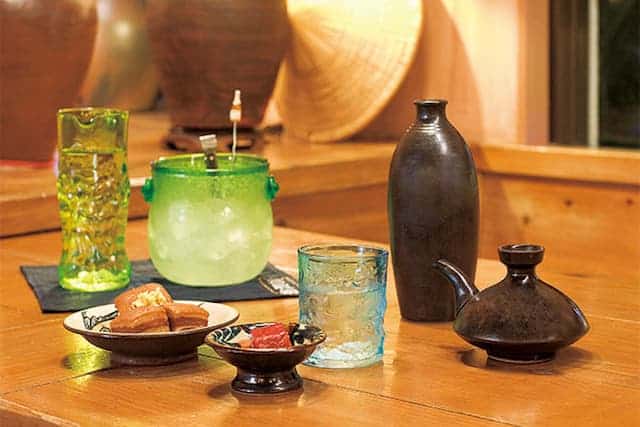
If you are a fan of alcoholic liquor, you may hear of sake and shochu somewhere. However, do you know that there are some differences between these liquors? This table shows some significant differences between these beverages.
| Sake | Shochu | Awamori | |
| Producing process | brewing | distillation two fermentations | distillation single fermentation |
| Ingredient | short-grain Japonica rice | short-grain Japonica rice | long-grain Indica rice (from Thailand) |
History
History of Awamori
In the 1400s, Okinawa (the Ryukyu Kingdom at that time) began to prosper as a trading nation by taking advantage of its geographical advantages. The royal trading ships traveled around the countries of East Asia, collected precious goods, exchanged them and gradually amass wealth. Among the Thai products that began to be traded in 1404, there was Tenjiku (made in Thailand), a distilled liquor made by fermenting and distilling coconut sap. The technique of distilling sake was developed under the control of the royal family. By 1470, it had grown enough to be exported. During that time, the residents of Akata, Sakiyama and Toribori behind Shuri Castle were the people who made it.
After that, during the Ryukyu Dynasty, the only peoson who was allowed to make it was Shuri Sanka. In the Meiji period, Ryukyu became Okinawa Prefecture and privately-owned awamori started from there. There were about 760 liquors stores at that time. Later, the awamori industry suffered great damage due to the effects of the Pacific War. However, due to the strong determination of the people there, awamori revived and became signature drink of Okinawa. With a history of over 600 years, it is Japan’s oldest distilled liquor. Therefore, beyond a drink, it is also a living history and the pride of Okinawa people.
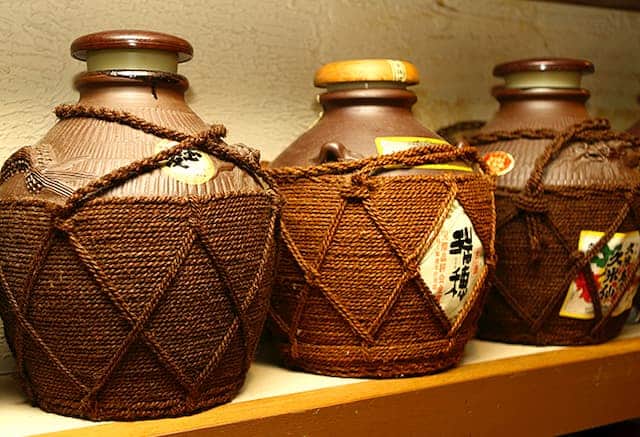
Etymology
The name of sake “Awamori” appears in an ancient Okinawan song from the late 1400s. There are several theories about the origin of the name awamori.
The awa theory
The theory that is believed by a lot of people is that the original name is “Awamori” but with different kanji 泡盛›. In Japanese, 粟 means “millet” and盛› refers to “a lot of”. The reason for this name may be because of the fact that this drink was originally made from millet. However, the change of kanji from 粟 (millet) to 泡 (bubble) possibly results from the change in ingredients from millet to Thai rice.
The Sanskrit theory
Awamuri is the ancient Indian Sanskrit word for alcoholic beverages. Therefore, some people believe that the word was brought to Japan and became “awamori”.
The Satsuma theory
In other theory, it is said that when the Satsuma lord presented the liquor to Tokugawa Shogun, it was named Awamori to distinguish from shochu (Kyushu).
The bubble theory
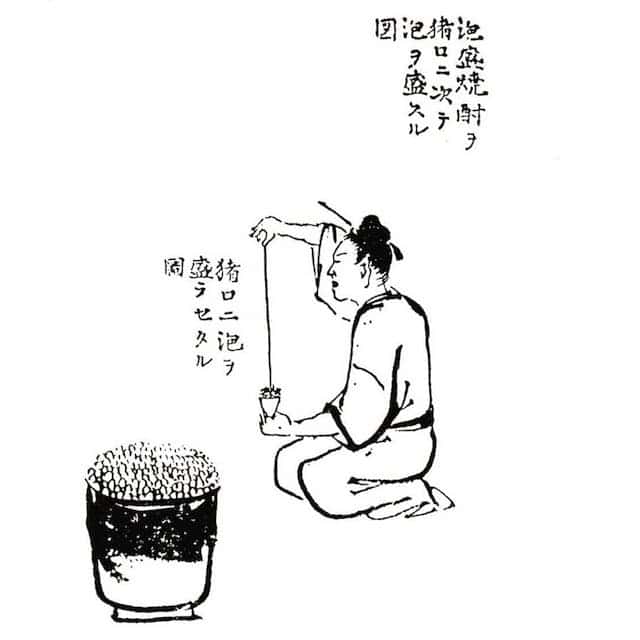
In the old days, people used to check the quality of distilled liquor using bubbles. The method is to hold a teacup or sake cup in one hand and slowly drop the liquor into the bowl from several dozen centimeters with the other hand to see how foamy it is. The better the quality, the more find bubbles wew formed and the longer it took for the bubbles to disappear. For that reason, the name awamori, which mean pouring bubbles, appeared. This is one of the most widely accepted theory among those mentioned.
How to make Awamori?
STEP 1: Use black koji mold
The black koji mold, which is one unique characteristic of Awamori making process, has an excellent flavor and produces good acidity. Thanks to this, it is possible to make awamori safely even in hot and humid Okinawa.
In sake making process, people use yellow koji mold while shochu (mainly from Kyushu) is made from white koji mold. Awamori has discovered and utilized black koji, which is very unique to southern countries. A major feature of black koji mold is that it products a large amount of citric acid during the manufacturing process. In other words, compared to other koji mold, the acidity of the “moromi” can be increased. Therefore, the “moromi” will not rot even in the hot and humit weather of Okinawa.

STEP 2: Produce rice koji
As we have stated before, the main ingredient of awamori is Indica rice from Thailand. The ingredients will be washed and soaked thoroughly and then steamed. Thai rice is then made into rice koji using black koji mold and water. Next, to make “moromi”, they will add yeast and ferment the alcohol. This is called the koji preparation, the most important feature of Awamori. Because the ingredients are 100% rice malt, the liquor has a strong flavor and the older the liquor gets, the more delicious it becomes.
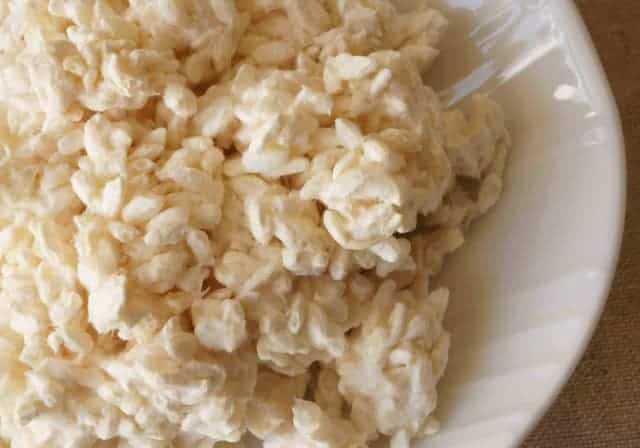
One of the differences between awamori and shochu is the koji preparation and fermenting process. Awamori is made by fermenting all of the raw rice into rice koji, adding water and yeast. On the other hand, to make general shochu, first you have to make rice koji and then add water and yeast to ferment it. During this process, the main ingredients such as potatoes, barley, rice are put into and fermented as well. This is the reason why sochu has double fermentation process while awamori has only one.
STEP 3: Distill with a pot still
When the alcoholic fermented moromi is ready, steam it and the first liquor to come out from the still is called “Hanasake” (Flower liquor). It is a distillation method that coolds down the moromi and makes it become awamori. This is the oldest and simplest method of distillation.
Liquor can be broadly divided into brewed liquor and distilled liquor. Non-distilled alcoholic beverages such as sake, beer and wine are fermented alcoholic beverages. Shochu, whiskey, brandy vodka, etc are distilled alcoholic beverages.
Distillation is the process of separating the components or substances from a liqid mixture by using selective boiling and condensation. If you cool it down, you will get alcohol of 60 degrees or more. It is the so-called “Hanasake” (flower wine). This hanasake has a high content of alcohol but when you drink it, the sweetness of rice is really amazing.
STEP 4: Storage
After all the producing process, awamori will be stored by using a traditional storage container or a ceramic pot. Long-term aging is said to make the liquor sweeter and tastier.
How to age your own Awamori?
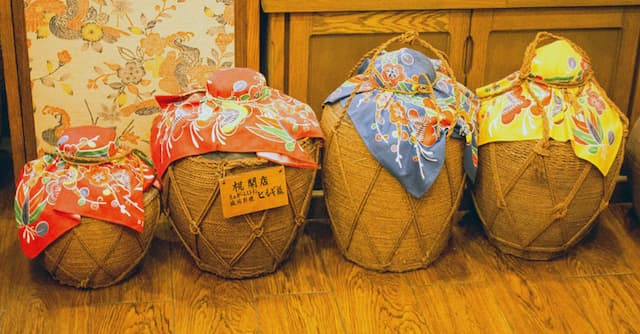
If you want to age a good kushu (aged wine), it is really important to choose the correct awamori. There are two things that you have to pay attention to when choosing:
- Choose one with high alcohol content.
- Choose one with strong flavor.
Choose one with high alcohol content
Over the long period of time, original ingredients of awamori chemically change and that is what makes the aged awamori. This old liquor has a sweet aroma and a mellow flavor. The longer it is, the tastier awamori becomes. One advantage of liquor with high alcohol content is that it consists of more ingredients than water, which means more ingredients are aged during the wine aging.
Although awamori with low content of alcohol is very easy to drink and suitable for young people and women, the perfect choice for awamori aging process is the one with high content of alcohol.
Choose one with strong flavor
Do you know that the modern awamori is much easier to drink than in the past? One of the reasons is that the technology and equipments for producing awamori have developed tremendously over the past few decades. However, in order to make awamori easy to drink, it is not enough to simply lower the alcohol content but the makers also have to remove the unique odors and richness of it.
In fact, the unique odor and richness is said to be very important feature in aging awamori. Therefore, rather than easy-to-drink awamori, awamori that is “unique” and “have strong flavor” is much better for making aged sake.
Recommended brands of Awamori
Easy-to-drink types
Kamimura Sake Brewery – Awamori Warm Stream, 30°
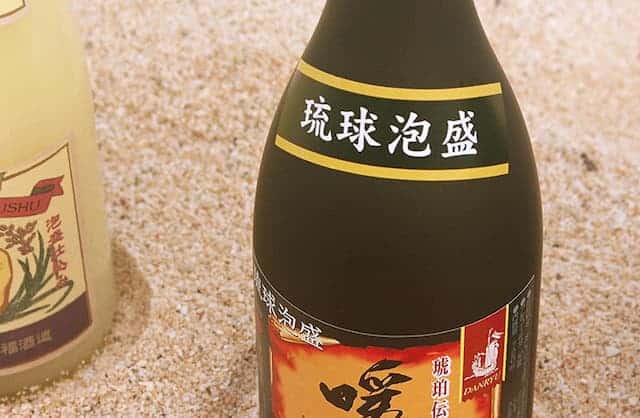
Kamimura Shuzo is a long-established brewery founded in 1882, and is also known as a pioneer of barrel-stored awamori. This is a discerning bottle based on old sake that has been stored in oak barrels for over 3 years. The recommended way to drink it is to mix with soda and serve with cut lemons. It could be the best option to pair with cheese or meat.
Chuko – Yokka Koji, 43°
Awamori is the traditional spirit of Okinawa and Chuko have been making it since 1949. This is a rich, complex and whisky-like Awamori from Okinawa, Japan. This liquor has hints of pear, green apple and rose with smooth, luxurious texture. The tip for you is to drink it as whisky in order to find an amazing sour taste. It is also a good idea to mix it with your favourite drink to create an original cocktail with rich flavor.
Recommended brands of luxury awamori
Zuisen Sake Brewery – Mizuizumi Omaro 21 Years 35%
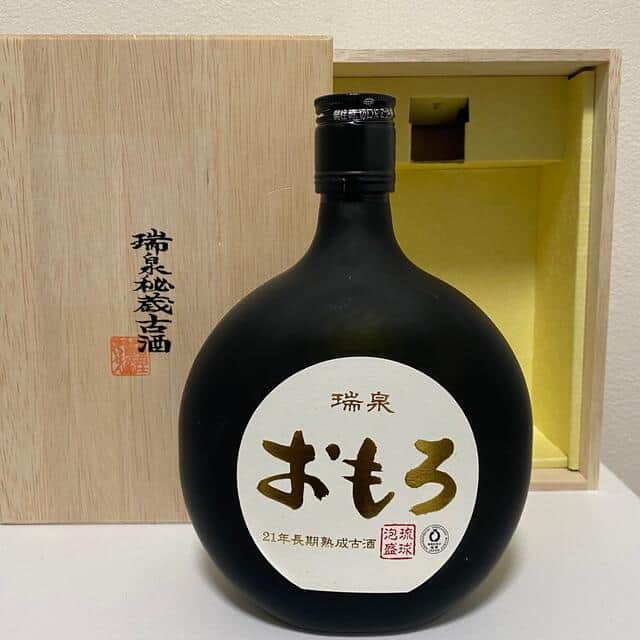
This is the awamori which has been aged for 21 years and is the pride of Zuisen Brewery. The gorgeous vanilla scent that rises when the stopper is opened is really attractive. When you drink, you will tast a soft sweetness that is uniqe to aged old sake, along with a rich and umami flavor. This Mizuizumi Omaro 21 Years 35% is perfect for celebrating important anniversaries and special occasions. We recommend drinking straight or ice style. If you are a fan of heavy vintage awamori, please check it out.
Yamakawa Sake Brewery – Kaneyama kusu (Limited Hizoshu)

This is an old liquor that has been aged for a long time. It is a full-fldged brand produced by Yamakwa Sake Brewery, a brewery that has been making old liquor with a strong commitment since its establishment. The awamori, which has been aged for 20 years, is unique by its bittersweet and cacao-like scent. You can enjoy a thick and mellow mouthfeel that you do not think it has the high alcohol content of 43%. The bottle is attractively wrapped in getto paper or wooden box. You can drink it important events like celebrations.
Recommended brands of paper pack awamori
Higa Sake Brewery – Zanpa White Pack
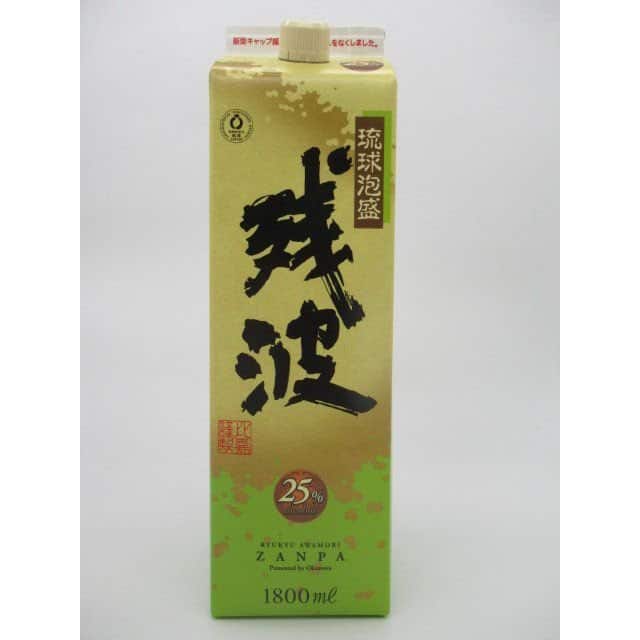
This awamori is also known as “Zanshiro”. The fruity aroma that rises when you open the cap and the clear taste of Zanshiro is really attractive. Zanshiro has a low alcohol content of 25% so it is perfect for begginners to Awamori. For the best drinking, we recommend drink with ices, water or with soda. If you are looking for an easy-to-drink liquor in a paper pack, this would be one of the best option.
Kumejima – Kumesen 30° Pack
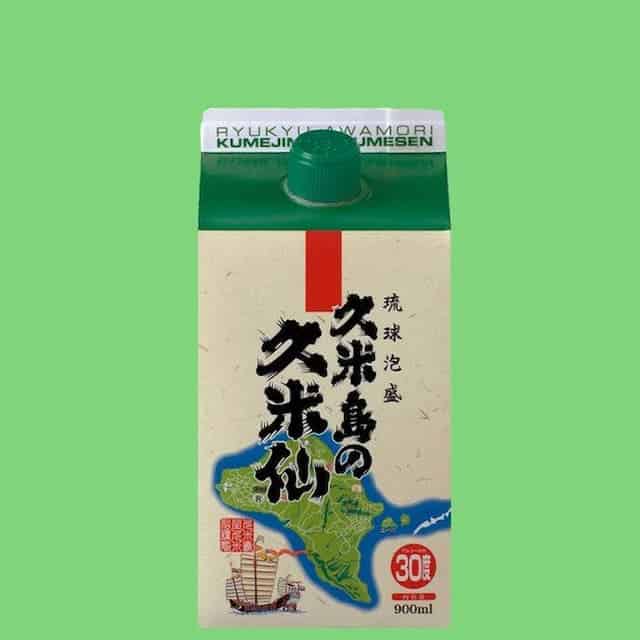
This is awamori made on Kumejima, a remote island rich in nature located in the west of the main island of Okinawa. This is a discerning brand that applying traditional methods using carefully selected southern hard rice and natural spring water. It is characterized by a refreshing taste with a hint of sweetness.
We recommend drinking in a basic style first, such we drink straight or drink with ices, water or with soda. Because it does not have a strong peculiarity, you can enjoy this fruit wine made from seasonal fruits and crystal sugar. Even if you are bored of traditional way of drinking, you can serve yourself an original cocktail that mix Kumesen with your favourite drink.
Another nice point is that this drink is reasonably priced. If you like refreshing awamori that brings out the original flavor of the ingredients or if you are looking for a good drink for your evening, please add this to your list.
Restaurants to enjoy Awamori
It would be great iff you could drink delicious awamori in Okinawa with beautiful landscapes and beaches! But if you do not live in Okinawa, it is not easy at all for you to go to the restaurants and enjoy this Okinawan experience. If so, how about enjoying delicious awamori and local cuisine at an Okinawan restaurant where you can easily stop by on your way home from work? Today, we want to introduce some restaurants in Tokyo where you can feeling like travelling Okinawa without going too far.
Taketomi-jima
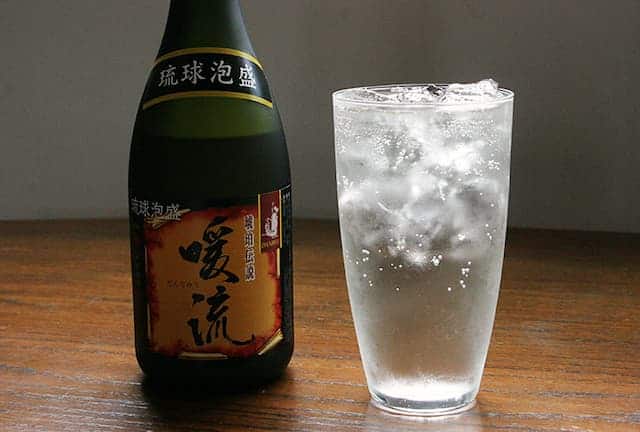
Taketomi-jima has a wide variety of colorful island fish that you can not find in Tokyo. The lineup of awamori in Taketomi-jima has major brands of sake breweries on the main island of Okinawa such as Usaki – a reproduction of black koji appeared before the war with features of sweet fruity aroma and mellowness; Okinawa Sake Brewery, which inherits traditional old liquor brewing with the deep richness of favor. There are also rare brands such as the “Uminokumi 10 Year Old Sake 43 Degrees”.
Okinawa Dining Haisai
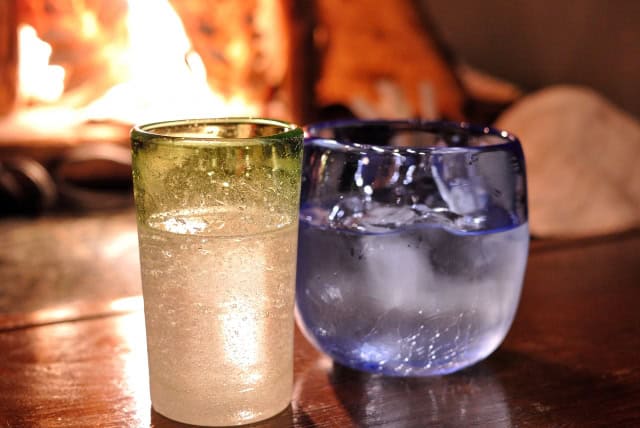
“Okinawa Dining Haisai” is where you can enjoy standard Okinawan cuisine in a restaurant that incorporates the sophisticated atmosphere of Jiyugaoka. About 2 minutes on foot from Tokyu Line “Jigyugaoka” station.
The awamori menu has plenty of brands recommended for first-timers and women. Nakijin Sake Brewery’s Utsukushiki Furusato 20 degrees, which is characterized by the gentle aroma of awamori, and Tsukayama Sake Brewery’s Kokuka 20 degree, which uses yeast harvested from hibiscus and is reminiscent of a southern country are drinks that popular with women. Since the drink is usually served in a Ryukyu glass, you can enjoy a special feeling of getting drunk with Okinawan culture.
Tokyo Urizun
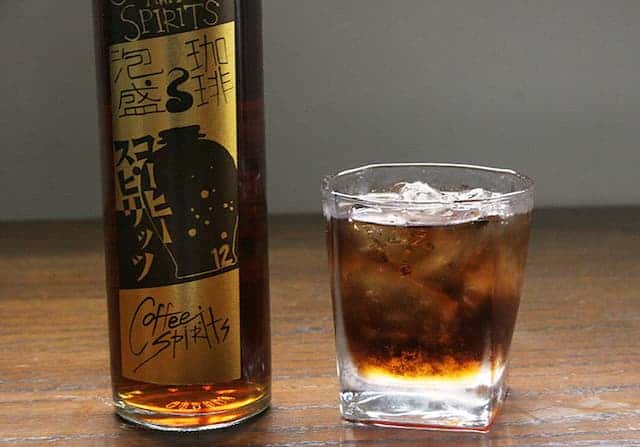
This is the Tokyo branch of the famous Okinawan restaurant Urizun which has a store in Naha, Okinawa. You can enjoy a wide variety of awamori and authentic Okinawan cuisine. This restaurant is just 1 minute walk from Tokyo Station on the JR Line/ Tokyo Metro.
Tokyo Urizun is a treasure trove of awamori, with brands of most of breweries in Okinawa. There are special brands that can only be tasted at this restaurant such as “Urizun Special Kusu 21 Year Old” and “Tokyo Awamori”. Come to Urizun for a heaven of awamori!
Takeaway
Awamori is the symbol and pride of Okinawan. With different brands for almost every one from the lightest to the strongest, you can choose yourself a suitable brand to enjoy this liquor. It is such an idea sitting next to the beautiful beach,enjoying awamori but if you do not have the chance to, just try this experience at home and pair with some delicious food. Come one and enjoy the amazing taste of awamori!
Do you know that food is best paired with awamori? Try to drink and eat with fried food, fatty meats such pork belly. Check out here for a recipe to combine with awamori!
Awamori FAQ – The Spirit of Okinawa
- What is Awamori?
Awamori is Okinawa’s traditional distilled spirit, made from long-grain Thai rice and black koji mold. It has a history of over 500 years.
- How is Awamori different from sake or shochu?
Unlike sake (brewed) and shochu (distilled with various ingredients), awamori is always distilled from rice and tends to have a stronger, more aromatic flavor.
- What does Awamori taste like?
It has a bold, rich flavor with a slightly sweet and mellow aftertaste. Aged versions (kusu) are smoother and deeper in taste.
- How strong is Awamori?
Standard awamori is about 25–30% alcohol, though some can be much stronger.
- How do locals drink Awamori?
It can be enjoyed straight, on the rocks, or diluted with water (mizuwari or oyuwari). In Okinawa, it’s often mixed with water and shared in gatherings.
- Where can I try Awamori?
Almost every izakaya, bar, and restaurant in Okinawa serves awamori. Distilleries across the islands also offer tastings and tours.
- Can I buy Awamori as a souvenir?
Yes! Bottles are available at Okinawa airports, liquor shops, and souvenir stores. Aged kusu makes an especially prized gift.
- Why is Awamori culturally important?
Awamori has been a part of Okinawan life for centuries, often used in celebrations, rituals, and hospitality. It’s more than a drink — it’s a symbol of island culture.
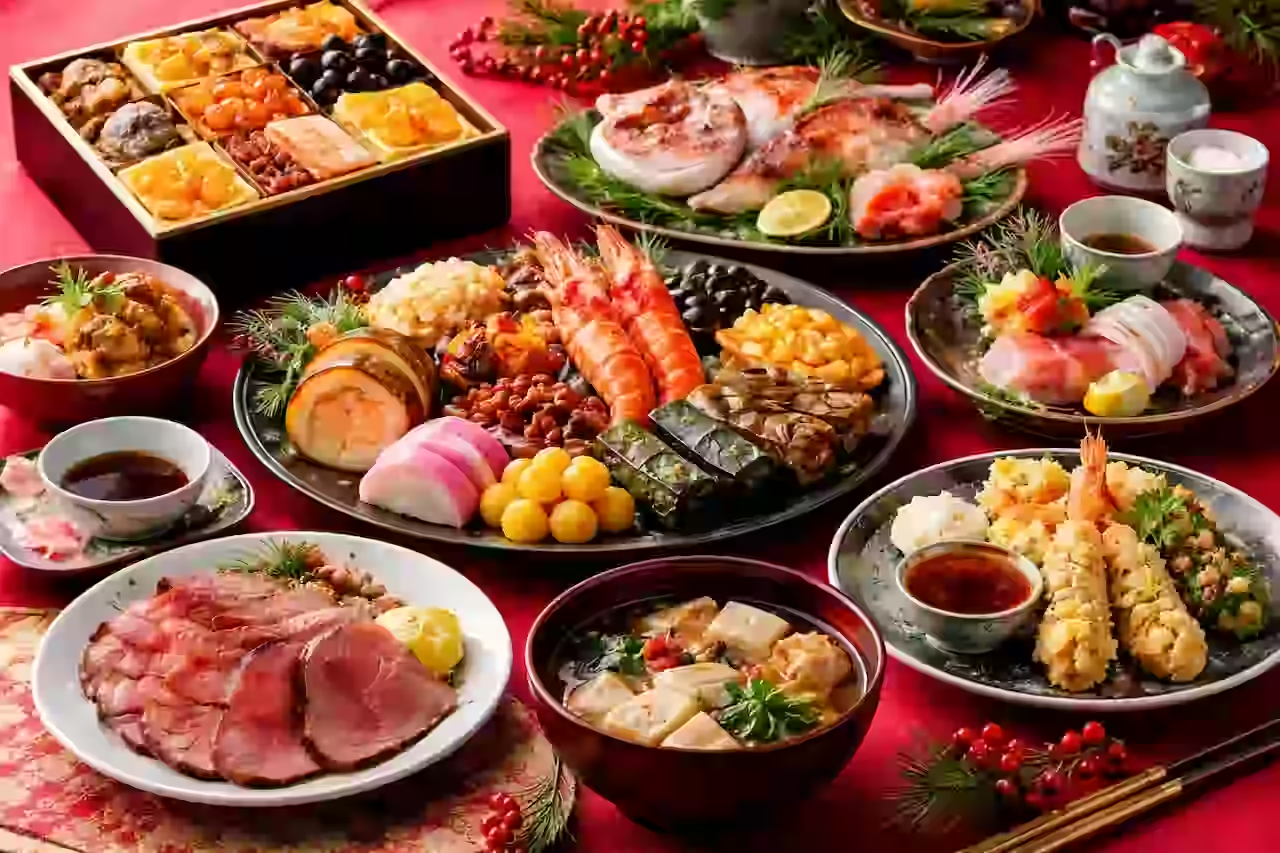
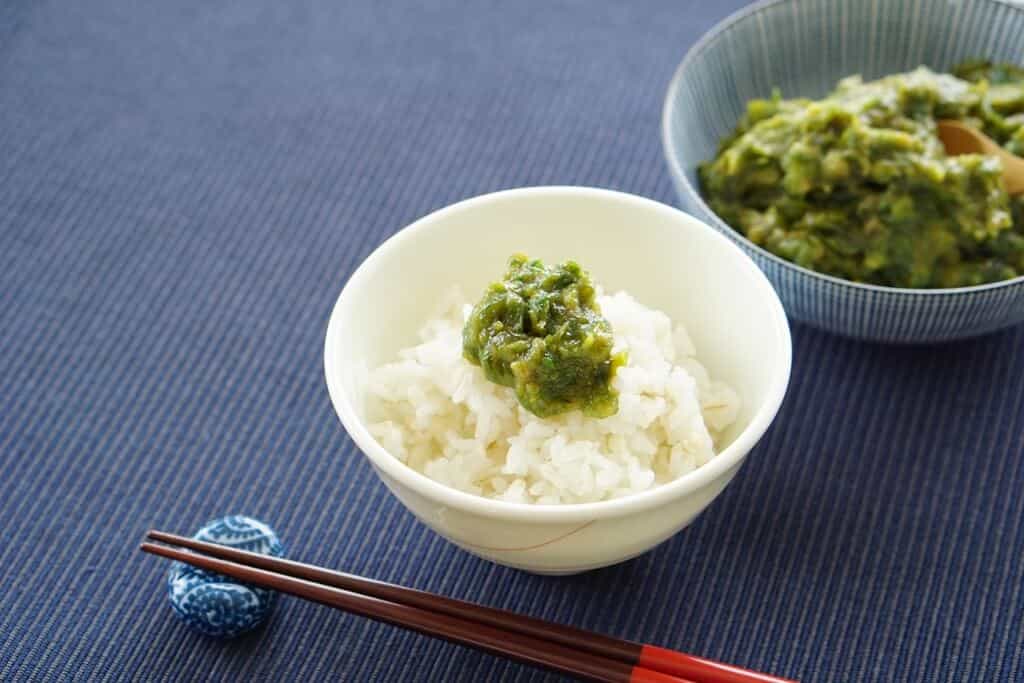
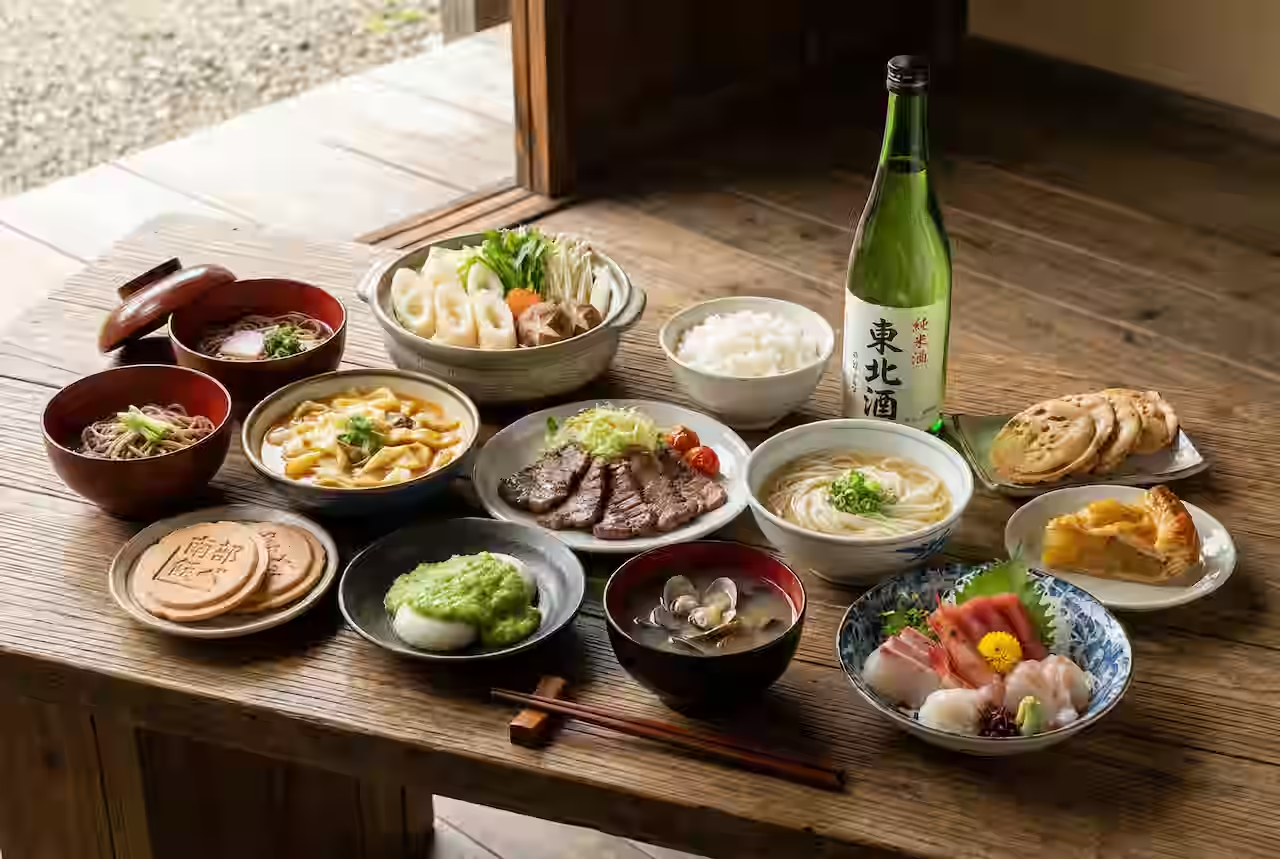

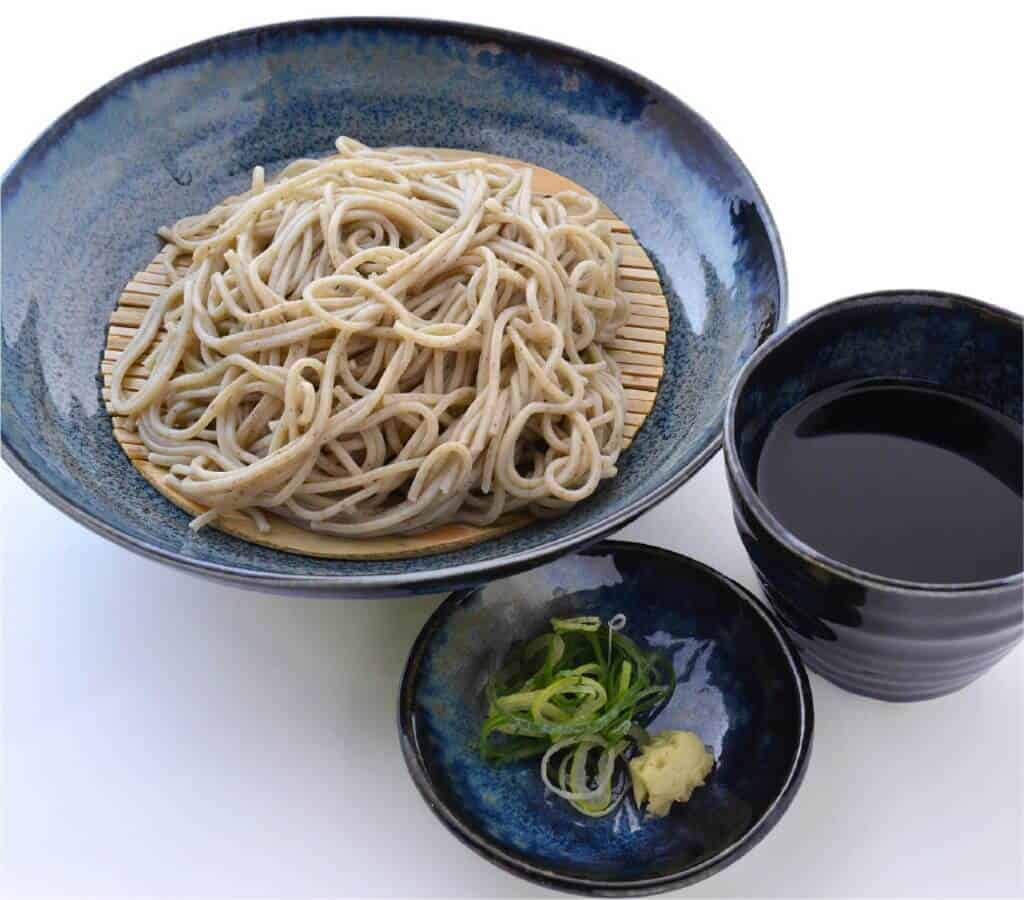

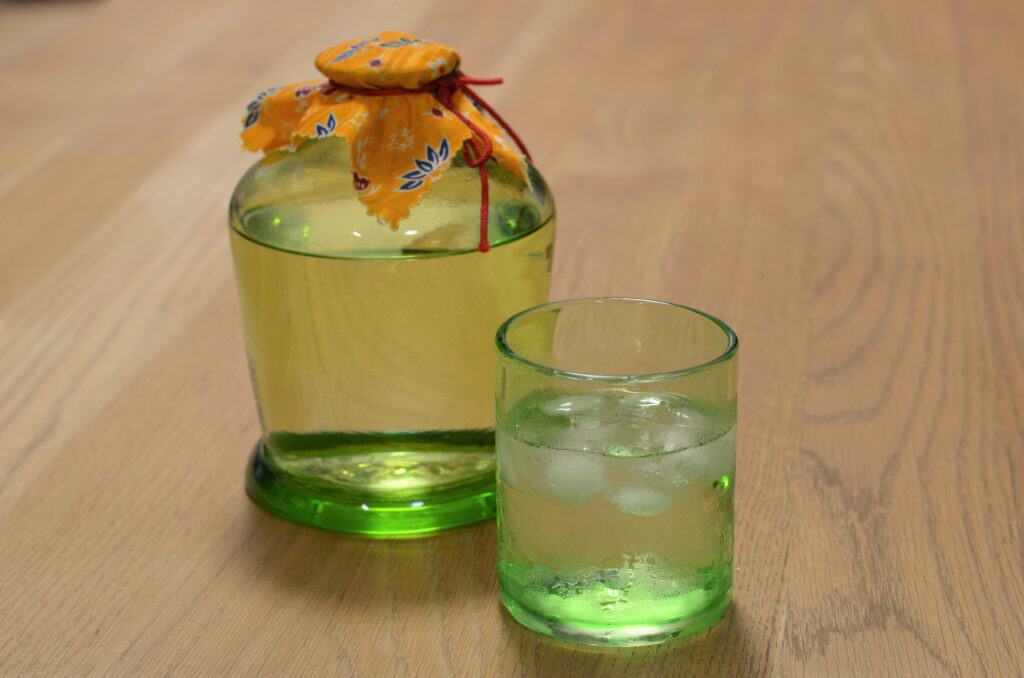
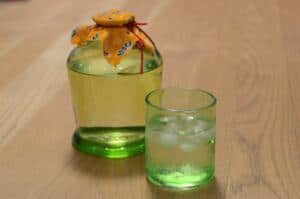
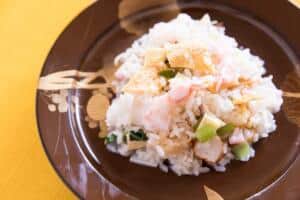
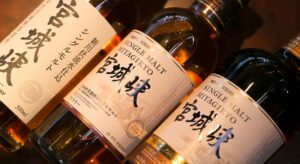
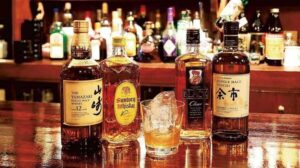
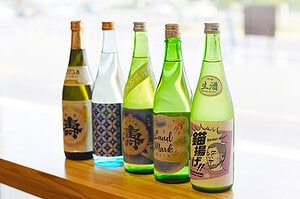
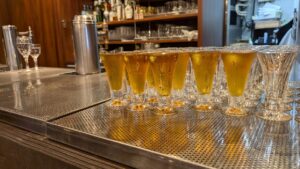
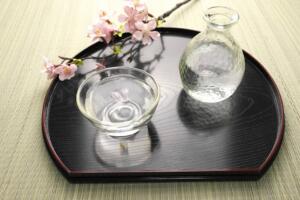
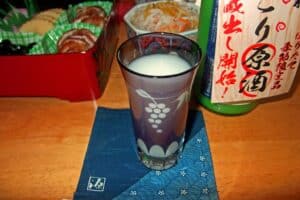
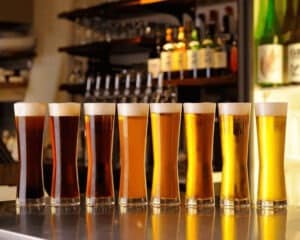
Comments